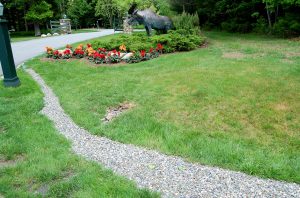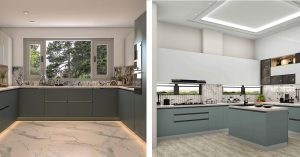The California Department of Housing and Community Development offers a free handbook about building an ADU, including the most recent legislation. (Photo compilation courtesy of the Department of Education)
Often called the “sandwich” generation, people aged 40 to 60 find themselves caring for aging parents and their children. The challenges of this balancing act can be overwhelming, particularly regarding housing arrangements.
Enter the accessory dwelling unit, a versatile and innovative solution that offers a range of benefits for those facing the unique demands of multigenerational living.
The ADU is also known as an in-law unit, granny flat, or carriage house. It usually has a kitchen, living area and separate entrance. It may be built as a standalone unit, but it generally will use the primary house’s water and energy connections.
A junior accessory dwelling unit is no more than 500 square feet and is contained entirely within a single-family residence as an addition. Each county has its own definition, but a JADU typically has its own entrance and kitchenette but may share bathroom facilities with the main house.
The state of California has undertaken substantial legal reforms to facilitate the construction of ADUs and JADUs. These changes include streamlining the permit approval process, reducing or eliminating minimum lot size requirements, eliminating or reducing parking mandates and relaxing setback regulations.
For instance, the state now requires all agencies involved with reviewing ADU plans, including planning departments and utility companies, to respond within 60 days of submission of plans.
The easing of regulations for ADUs aims to promote more accessible and efficient construction, addressing the housing shortage and providing homeowners greater flexibility in utilizing their land.
While most of us may not appreciate higher-density housing with more residents (and cars) added to the neighborhood, building an ADU on residential property has many advantages for the homeowner, including making more room for adult family members or providing opportunities for supplementary income.
Privacy and space for all
The heart of the ADU concept lies in its ability to provide a harmonious living situation for multiple generations. Maintaining privacy becomes essential as aging parents need assistance and adult children move back home. It offers a separate living space that can be customized to fit the needs and preferences of its occupants.
Aging parents can enjoy their independence without being completely isolated, and young adults can have autonomy while saving on housing costs. This spatial division helps reduce the stress often accompanying shared living arrangements, ensuring a better quality of life for everyone involved.
Support for boomerang kids
With the rising cost of living and education, it’s becoming increasingly common for young adults to return home after college. ADUs offer a middle ground where boomerang kids can regain footing without compromising the family’s living space. By providing a self-contained living area, parents can continue to nurture their children’s growth while instilling a sense of responsibility and independence.
In other words, you can kick them out without really kicking them out. Their tiny home becomes a launchpad for young adults as they transition into fully self-sufficient lives.
Caring for aging parents
The role reversal that occurs when the Sandwich generation takes care of their aging parents can be emotionally and logistically complex. ADUs streamline this process by allowing grandparents to maintain autonomy while residing close to their children and grandchildren. This setup ensures that necessary care is readily available and fosters intergenerational bonds, creating a unique family dynamic that enhances the lives of everyone involved.
Flexible housing options
One of the standout features of ADUs is their flexibility. These units can serve many purposes depending on the family’s changing circumstances. When not being used by family members, the ADU can transform into a valuable source of income. California’s housing shortage has driven up demand for rental properties, making ADUs a prime option for vacation and long-term rentals. This dual-purpose functionality allows the Sandwich generation to adapt to their evolving needs while generating extra funds to support their household.
Tiny houses
For widowed or single individuals approaching retirement, moving into their Accessory Dwelling Unit (ADU) while renting out their primary house has become a savvy financial strategy.
This innovative arrangement offers a twofold advantage: first, it allows homeowners to downsize and maintain an independent yet manageable living space tailored to their needs; second, renting out the larger primary house generates a consistent stream of rental income.
We have seen clients move their children and grandchildren into the main house while they move to the tiny house since they do not need the room but want to maintain their space.
Man cave or she shed
If you ever find yourself with an empty nest (finally) and do not need the rental income, the extra room in your ADU suddenly opens up a world of possibilities. It’s like having a blank canvas just waiting for your personal touch. Whether you’re itching to create a cozy “she shed” or place to work away from the house where you can let your creativity run wild or envision the ultimate “man cave” for kicking back and relaxing, the extra space becomes your haven.
By providing additional space, privacy, and autonomy, accommodating boomerang kids, supporting elderly parents, and offering income opportunities, the Accessory Dwelling Unit emerges as a versatile and valuable solution for the Sandwich generation.
Some lenders offer specific home improvement loans that can be used for ADU construction. These loans often have favorable terms and interest rates. Discuss with your tax professional limits on the mortgage interest deduction and property taxes if you decide to build an ADU.
To learn more, the California Department of Housing and Community Development offers a free handbook about building an ADU, including the most recent legislation. It is available online at hcd.ca.gov.
Michelle C. Herting is a CPA, an Accredited Business Valuator, and an Accredited Estate Planner. She specializes in succession planning, business valuations, and settling trusts.
Read the full article here














